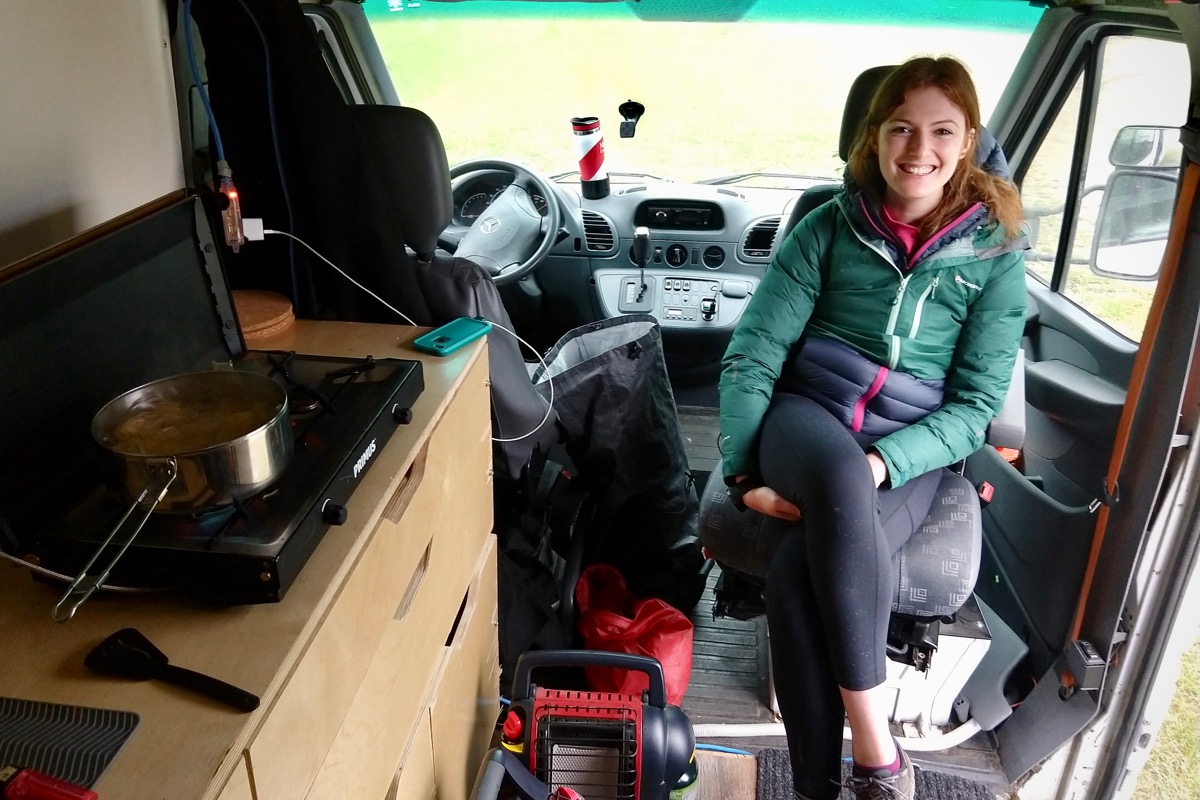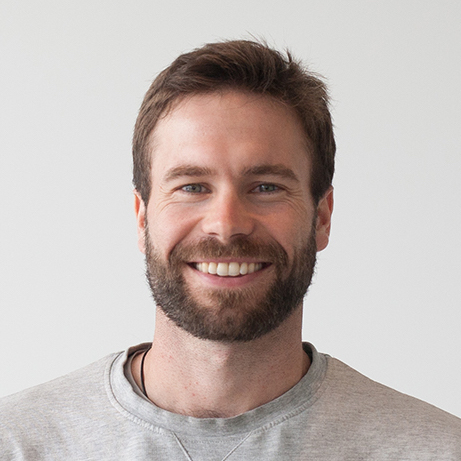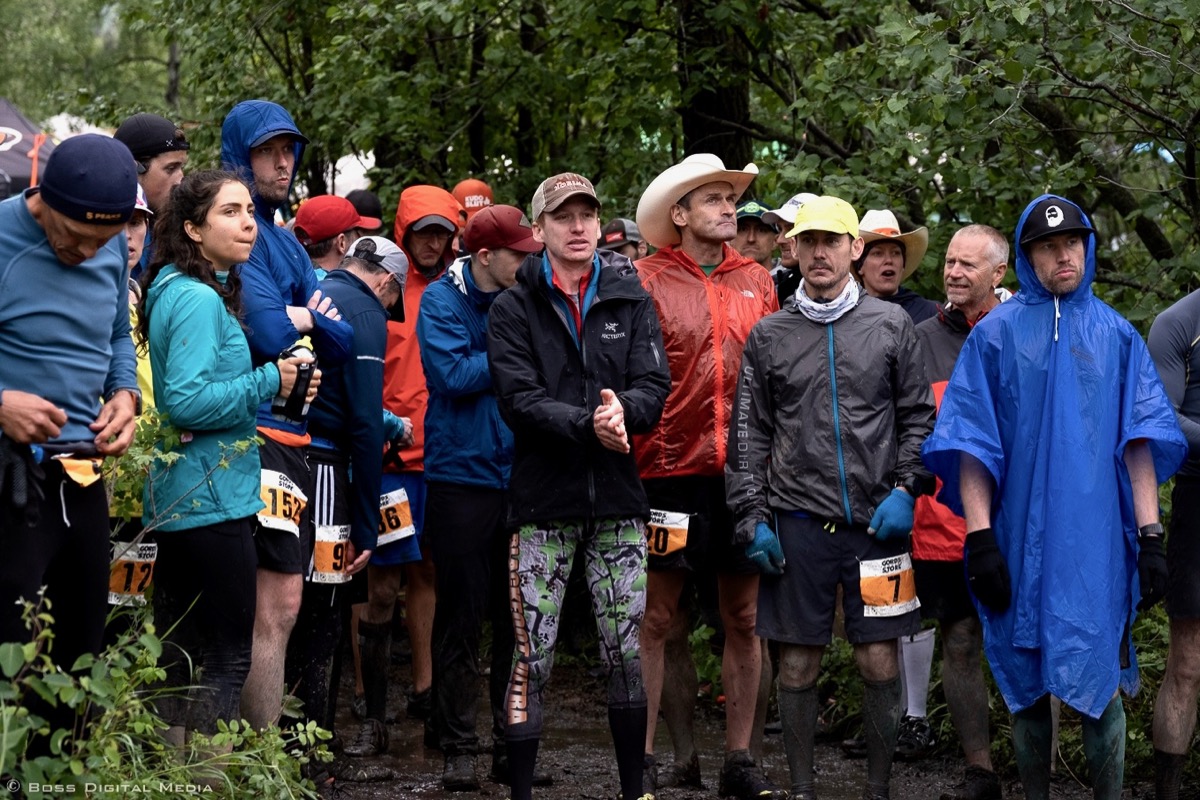I was bit by the ultramarathon bug in 2014, and ever since I’ve wondered what it would be like to run 100 miles. Like many others, my gateway into the world of ultras was the book, Born to Run, by Christopher McDougall. The book is an exciting exploration of human endurance featuring the Tarahumara people of Northern Mexico known for their extraordinary running ability, a mysterious American man named “Caballo Blanco” who would disappear into the canyons of Central America for months at a time, and many other ultramarathon legends like Scott Jurek and Ann Trason. These stories consumed me and I wanted entry into this bizarre sport. I couldn’t fathom how it was possible to run 100 miles, but the following year I lined up for my first ultra with the intention of one day finding out.
Not all ultras are 100 miles long, but ever since Gordy Ainsleigh ran the distance in a horse race on the Western States Trail in 1974, it has become the gold standard for elite competition. Despite races of all kinds of distances popping up all over the world, from 50k to over 200 miles, it is telling that the Western States 100 Mile Endurance Run remains the most prestigious and famous ultra in the United States. I first learned about this race when a friend of mine told me to watch Unbreakable: The Western States 100, a quirky documentary about the 2010 event. I was hooked. The film follows four top runners, including my first hero of the sport, Hal Koerner. It was his training guide that I used to prepare for my first race in 2015, a rugged 55km trail run with 2200m (7280ft) of elevation gain — not exactly an easy initiation. Even though that first race went well, it destroyed me physically. I couldn’t fathom how anyone could keep going for another 105km.
The Beginning
Though active since a young age, my foray into running was a begrudging one. Running had always been a necessary evil for performing better in soccer and others sports; it was never the main course. My appreciation of running for its own sake started in 2013 by joining a friend in a project he called “fifteen 365”. The challenge was to see if you could run every day, for at least 15 minutes, for a calendar year. While neither of us reached the goal that year (65 days shy!), those ten months unlocked something in me. I discovered the joy of running I’d previously reduced to myth.
I ran two half marathons and eventually a full marathon over the following year. The halfs went fairly well, but that first marathon was FAR from a pleasant experience. With an IT band injury sparked by an errant dive playing softball in the months before the race, I showed up at the start line incredibly undertrained. Instead of calling the whole thing off, however, I strapped on a knee brace and hoped for the best. It wasn’t long before shooting pain began coursing up and down my left leg. By 30km I was walking. I hobbled along as best as I could, stopping every few minutes to futilely massage my knee. The battle for those last 12km was unlike anything I’d ever experienced before. As a lifelong athlete who’d always been quite fit, it was humbling. I finished well behind my goal in a time of 4:28, but I was still proud to have finished. But more importantly, I got my first taste of the Pain Cave.
The next year, I wanted to return to the race with proper training and run it in a time I felt was more in line with my abilities. That same weekend, however, was the Bromont 55km trail race and my running buddy Jean-Nic wanted to do the ultra. I was torn. I wanted revenge on the marathon. Once he registered for Bromont, however, I succumbed to peer pressure and registered as well. I’d barely finished a flat road marathon, and now I was signed up for an event in the mountains that would likely take twice as long to finish. I was slightly terrified, but it mostly meant I had to get serious about training.
As luck would have it, the dates of the races changed that year, and we had the opportunity to run them both. While trail running and road running are very different, fitness is still fitness, and I was excited for another shot at the marathon. It would also act as our last big training run before Bromont. That summer I leaned into Hal’s training plan, running 6 days a week and it paid off big time. I hit my goals – to the minute! – in all three races that year: 1:30 in the half, 3:19 in the marathon and 7:00 in the ultra.
Reaping the rewards of all that training was incredibly satisfying. Addictive even. It also gave me the confidence that I could run faster and farther if I was disciplined enough. The next October, after thru-hiking the PCT, I ran my first 50 miler – Bromont again – in 10:15, a respectable time for another rugged race with over 3000m of elevation. I was two for two in the ultra world and only expected it to improve from there. Running the mythic 100 mile distance was still a massive mental hurdle, but it was becoming more and more within reach.
Sadly, this careful ramp up in endurance was short lived. I strained my glutes in the late stages of the Bromont 80km and failed to take care of them in the weeks after after the race. The following two years were then plagued by injuries and inconsistent training. The races I subsequently ran all followed the same script:
- Act I: Go out hard
- Act II: IT band and glutes flare up
- Act III: Walk/hobble to the finish
This happened at the Mont-Royal Trail Marathon in Nov 2016, the Avalon 50M in Jan 2017, and then in back to back years at the Baker Lake 50k in October of 2017 and 2018. My finishing times in those last two was hilariously (and painfully) 50 seconds apart. The only exception to this rule was the Squamish 50M in Aug 2018 where I gave myself a very reasonable goal time and focused on having a fun, easy-going, injury-free race.
After entering the sport in style, I had spent the following two years making all the mistakes you can make in training and racing. It was time for a reset. There was no way I could even thing about signing up for a 100 miler if I could barely make it through a 50k without injury problems. After my second sub-par performance at Baker Lake, I decided I wouldn’t run any more races until I had properly healed and only if I had trained adequately. Little did I know when I made that pact with myself that I would begin training to run 100 miles only a few months later.
The Outrun Backyard Ultra
In the fall of 2018, my good friend and fellow ultra-nut, Ella (Red) introduced me to Big’s Backyard Ultra. The format of that race has been covered in more detail elsewhere, but I’ll recap it quickly: Runners have an hour to run a 4.16mi (6.7km) loop. If they complete it within the hour, they can rest/eat/drink/sleep/whatever until the next loop begins on the next full hour. Repeat ad finitum until only one runner remains.
During last year’s running, we followed race director “Lazarus Lake”, of Barkley Marathons fame, as he posted poems on the event’s Facebook page while a slew of runners ran loops in his backyard for 2.5 days (!!!). Like many things I now love, at first I thought this was ridiculous, insane, even cruel. But I was transfixed. Big’s was one of those races I never really envisioned running. It was firmly in the “not-for-me” category; leave that one to the freaks.
Then, days later, Ella signed up for a copycat race in Calgary called the Outrun Backyard Ultra, and she urged me to do the same. It took me maybe 24 hours of deliberation before I was entering my credit card data into the Ultra Signup registration form, shaking my head at the stupidity of it all. My first race of 2019 was going to be a death march. So much for staying healthy! When I later contacted a local running coach for help with training for the year, he wasn’t at all impressed with my decision to kick off the season with something so likely to end in injury. But so be it. Sometimes you need the Ellas of this world to coax you into things you wouldn’t do otherwise.
Training for Outrun didn’t require anything special. It’s a battle of attrition, not speed. I spent 3 months — April to June — ramping up my weekly mileage and getting strong again. I ran trails and road, aiming for 100km a week with 2000m+ of elevation gain. Even though the course for Outrun was almost entirely flat, I needed a good climbing base for the hilly White River 50 miler the month after. I got in shape very quickly and I ended that training block with a 100 mile week two weeks before the big race. I felt good, but I still wasn’t sure what exactly I was training for. How many loops would this fitness translate into?
Based on past experience, I knew I could comfortably do 50 miles (12 loops), but how many more than that? 15 loops would mean reaching the 100km mark, a nice round number which seemed reachable too. A much more interesting number, however, was 24 loops for total of 100 miles. There were plenty of unknowns in getting there, but that’s half the fun of ultras. Once I started telling people about the race, I was invariably asked the big question: “How many loops are you aiming for?” After a few waffled answers, I just started saying “24!” with confidence and it stuck.
In the weeks building up to the race, I stayed with my uncle and aunt in the small town of Cumberland, BC on Vancouver Island. I hadn’t seen them since they left the city the previous October, so it was a great chance to catch up. I was with them for almost a month and most days were spent working on the van and training on the local bike trails which turned out to be world-class. I was also treated to my aunt’s wonderful cooking each night. It was a runner’s dream.
The race started the morning of Friday June 21, so a week before, I drove the back to Vancouver to pack the van and offload some tools into my storage locker. Not only did I need to prepare the van for the drive to Calgary, but also for the much longer road trip up to Yellowknife, BC the week after the race. My friend Megan lives in Yellowknife and after telling her about the race only weeks earlier, I half-seriously asked if she would like to be my “crew” for the event. I further joked that if she flew down to Calgary, I would “drive her home” — a cool 1500km North. To my surprise, she was game and we quickly made plans for a proper road trip.

Making dinner with Ella the night before the race
On Wednesday, two days before the race, I drove to Canmore, AB to visit Jules, a friend and fellow PCT thru-hiker from the class of 2016. We had a fun evening catching up and made plans for her to meet us for part of the race on Saturday. The next morning, I drove into Calgary to pick up Ella from the airport. We immediately began discussing logistics, race strategy and all things “backyard”. From the airport, we drove an hour south to Millarville, a small farming town on the outskirts of the city. It was a beautiful day but clouds were threatening us from all directions. Rain for Friday would not be ideal, so we developed contingency plans.
Once in Millarville, we went directly to the race area to set up our tents and suss out the situation. It turned out we were only the second runners to arrive and were greeted by some cheerful volunteers in long rain coats. We were shown where to put our chairs and tents for the race, and where we could park the van. Once we’d staked our spots, We then drove 30 minutes to the next town over to buy food and run some other errands. At the supermarket, we careened the aisles, loading our carts with calorie-dense foods, often highly sugary and highly salty, trying to anticipate our nutritious tastes hours into the race. I picked up $20 worth of jelly beans, for example, which in hindsight, was a tad excessive.
Later that afternoon, with errands complete, we drove back to the campground to prepare a pre-race meal inside the van. At 8pm, Ella left for her tent and I set off back to the airport to pick up Megan who was flying in from Yellowknife. I’d received a text from her before she boarded saying that her phone was about to die, so I knew coordination was going to be tough. It was raining hard, and Betsy’s driver side windscreen wiper arm had spontaneously snapped two days before, so I could only make out rough shapes in the distance.
I drove loops around the pick up bay, keeping my eyes peeled for Megan. I eventually spotted her on the fourth time around and she jumped in the van. She immediately told me her stressful travel story which included boarding pass malfunction, an encounter with a flirtatious security guard, only narrowly making it to the plane in time. After listening to her flight adventure, I ran through the campground setup and the race strategy for the following day. She had run road races before, but this would be her introduction to the mad world of ultras. Fortunately she was excited to be part of the madness.
We arrived back at the race area around 10:30pm so we didn’t stay up much longer before heading to bed. The rain continued to pour and the forecast was for even more rain the following day. I was nervous about running in the rain all day, but I tried to stay positive. The next day I was going to attempt to run 100 miles in 24 hours. What a thought.
You can read the second part of this post here: Endless Bummer: The Outun Backyard Ultra (Part 2).

Ross Noble is a software developer, ultrarunner, podcaster and former-van-dweller with a passion for the outdoors. He writes about running, cinema and anything else that interest him.
Montreal, QC
